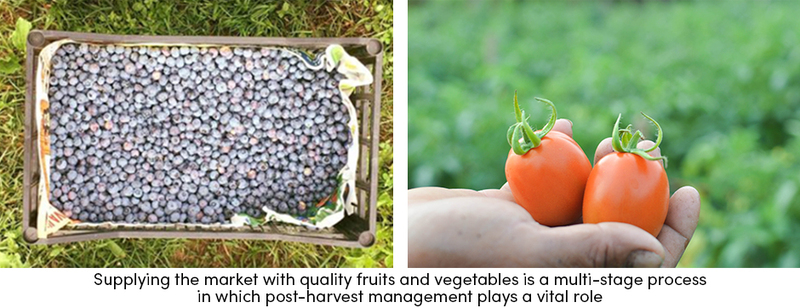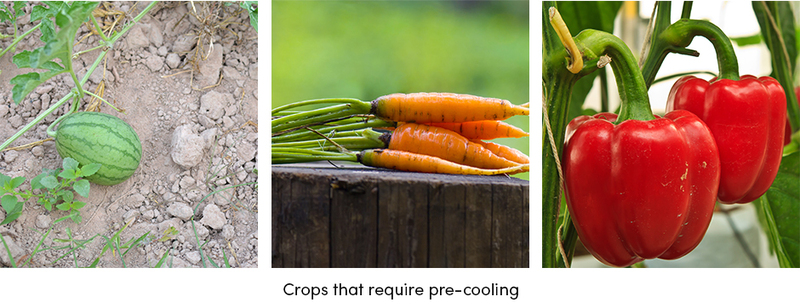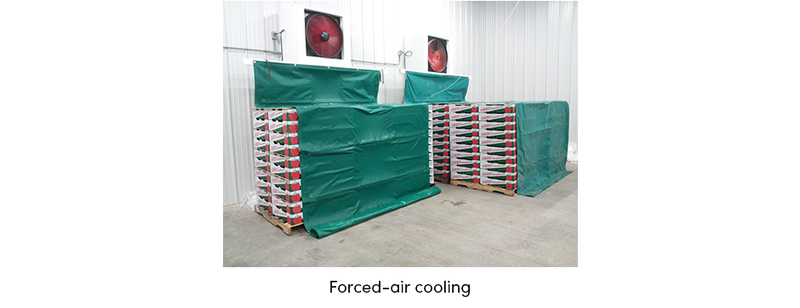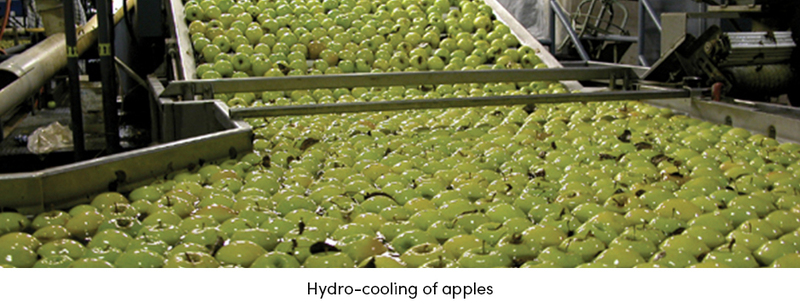
Supplying the market with fresh, nutritious, and quality fruits and vegetables is a multi-stage process in which post-harvest management plays an extremely important role. The journey between the harvest and the time the products reach the plates of their customers is considered a very delicate production stage. Every practice that is done during post-harvest management, can make a big difference, particularly pre-cooling.

Pre-cooling (also called “preliminary cooling“) is a vital post-harvest management practice that is required prior to storage. Since there is a big difference between the temperature of harvested crops and cooling storage, the main purpose of pre-cooling is to remove the heat from the crops after they are harvested. That way, pre-cooling reduces fruit respiration rateand extends crop storage life. Along with that, pre-cooling also inhibits the growth of various microorganisms, thus reducing the possibility of post-harvest diseases.
It's All About Proper Farm Management
The success of pre-cooling will depend upon two important factors:
- The time between the harvest and pre-cooling
- Initial crop temperature before pre-cooling
Generally, it's recommended to practice pre-cooling as soon as possible after the harvest. Still, some farmers practice pre-cooling after the products are packed.
Furthermore, there are some crops that can be successfully stored without pre-cooling. These include cabbage, cauliflower, green banana, guava, mango, papaya, pomegranate, and radish.
On the other hand, pre-cooling is an extremely valuable farm practice for various berries, stone fruits, peppers, cucumbers, tomatoes, melons, grapes, tangerines, okra, spinach, peas, and beans. Although certain crops can be stored without pre-cooling, farmers aiming towards the best results, practice pre-cooling as an integral part of their post-harvest management.

The Choice of Pre-cooling Method
The choice of pre-cooling method will primarily depend on the requirements of each crop type, as well as on farmer’s financial possibilities, required labor, available equipment, and materials.
A farmer can choose between one of the following pre-cooling methods:
- Room cooling; a simple pre-cooling practice that includes placing the crops in a refrigerated room or container. Although the practice has relatively low energy requirements, it’s very slow and therefore recommended for crops that decay slowly.
- Forced air cooling; removes field heat by using fans that circulate cool air throughout the storage chamber at high speed. This method is effective for pre-cooling of already packed berries and stone fruits.

- Hydro-cooling; one of the most common and effective pre-cooling methods. The method includes spraying or immersing the crops into cold water. One more advantage of hydro-cooling is that it also cleans the crop. However, various pathogens can be spread by water. Therefore, hydro-cooling requires adequate water quality and sanitation management. For this purpose, some farmers use chemicals to prevent the occurrence of bacterial or fungal diseases.

- Vacuum cooling; a method in which air is drawn out of the chamber. That way, pressure allows evaporation of crop moisture. Since the high amount of heat is required for water evaporation, this method is the fastest way of pre-cooling. This method is highly effective for leafy vegetables. In addition to vacuum cooling, farmers can also add water spraying in order to speed up the process of reducing thermal energy in the crops.
- Ice cooling; a method that includes applying crushed or granulated ice into a storage container or a box. As the ice melts, the cool water reduces the heat of the crops. The method is mainly used during the crop transport.
Once the crops are harvested, farmers have a big responsibility to do their best in order to protect the final yield and preserve crop quality. Pre-cooling is a simple but effective practice that reduces fruit respiration rate, and therefore, it's most definitely worth a try.
Sources: Agrivi












Comments (1)
Login or Register to add a comment